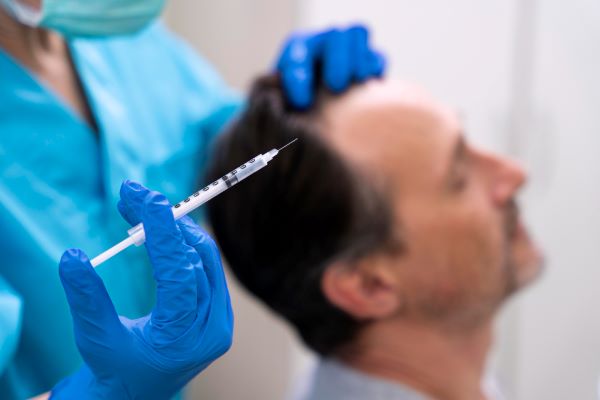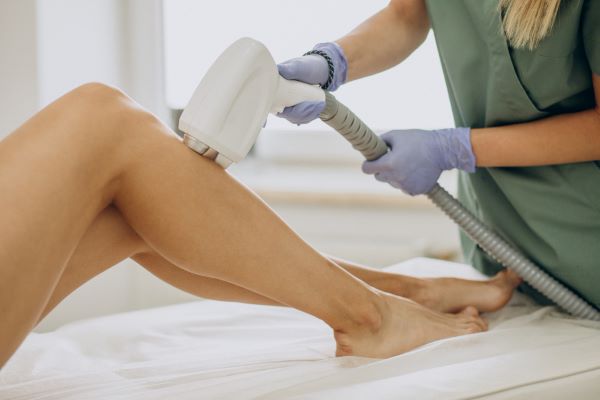
Stem Cell Therapy For Hair Loss: What You Need To Know In 2024
As we move further into 2024, stem cell therapy is gaining attention as a promising solution for hair loss. With advancements in regenerative medicine, stem cell hair restoration offers hope for those looking to revive thinning hair and tackle baldness at its source.
But how effective is it, and is it the best option available? Here’s what you need to know about stem cell therapy for hair loss, from its effectiveness to how it compares with traditional hair transplants and PRP treatments.
Does Stem Cell Therapy Really Work for Hair Loss?
Stem cell therapy uses the body’s own regenerative cells to stimulate new hair growth. Specifically, stem cells are collected, processed, and injected into the scalp where hair loss has occurred. These cells have the unique ability to develop into various cell types and promote healing and growth in damaged areas, including hair follicles.
Current studies indicate that stem cell therapy for hair restoration can effectively increase hair density and thickness for some patients, especially when caught at an early stage.
However, results vary widely based on individual factors like age, the extent of hair loss, and underlying health conditions. Many patients see noticeable results within three to six months, though not everyone experiences dramatic regrowth.
Stem Cell Hair Restoration vs. Traditional Hair Transplants: Which Is Right for You?
While both stem cell therapy and hair transplants offer solutions for hair loss, the two methods are fundamentally different.
1. Procedure:
- Stem Cell Therapy involves extracting stem cells from a patient's fat tissue or bone marrow, processing them, and injecting them into areas of the scalp with hair loss. The goal is to stimulate natural hair regrowth without surgical grafts.
- Hair Transplants involve removing hair follicles from a donor area (usually the back of the scalp) and transplanting them to areas experiencing hair loss. This requires a more invasive procedure and a longer recovery time.
2. Benefits:
- Stem Cell Therapy is minimally invasive and typically involves a shorter recovery period. Patients often experience fewer side effects since stem cells come from their own bodies.
- Hair Transplants provide immediate hair replacement, and the results tend to be more predictable and longer-lasting. Once transplanted, the new hair usually grows permanently.
3. Downsides:
- Stem Cell Therapy is still experimental and may not work for everyone. It also generally requires multiple sessions, which can increase costs.
- Hair Transplants carry surgical risks, including scarring and infection. They are also costly, with some procedures requiring multiple sessions for complete coverage.
4. Ideal Candidates:
- Stem Cell Therapy is often recommended for individuals with early-stage hair loss or thinning hair who prefer a less invasive approach.
- Hair Transplants are typically better suited for individuals with more significant hair loss who are looking for a reliable, long-term solution.

Stem Cell Therapy for Hair Loss vs. PRP (Platelet-Rich Plasma): Which is More Effective?
Here’s a breakdown of how this therapy and PRP (Platelet-Rich Plasma) compare when it comes to treating hair loss:
| Feature | Stem Cell Therapy | PRP Therapy |
|---|---|---|
| Process | Extraction of stem cells from fat or bone marrow, processed and injected into the scalp | Blood is drawn, centrifuged to isolate platelets, and injected into the scalp |
| Target Mechanism | Uses regenerative cells to create new follicle growth | Uses growth factors in platelets to stimulate existing follicles |
| Invasiveness | Minimally invasive; may require anesthesia | Minimally invasive; generally painless |
| Sessions Needed | 1-3 sessions annually, depending on hair loss level | 3-4 sessions over a few months, then maintenance every few months |
| Cost | $3,000 - $10,000 per session | $500 - $2,000 per session |
| Effectiveness | Shows promise for mild to moderate hair loss; limited to extreme baldness | Effective in early hair thinning; limited for advanced hair loss |
| Side Effects | Minor swelling or discomfort at injection sites | Minimal, with slight soreness or bruising at most |
| Outcome | Potentially longer-lasting hair regrowth | Temporary boost in hair density and thickness |
Is Stem Cell Therapy Right for You?
Choosing the right hair restoration treatment depends on individual goals, budget, and hair loss stage. Stem cell therapy, while promising, remains new and may not guarantee results for everyone. Those with early hair thinning might benefit from stem cell treatments or PRP, as they target different stages and types of hair loss. However, individuals with more advanced baldness may find more reliable results with a traditional hair transplant.
Ultimately, the best path for anyone struggling with hair loss should be discussed with a dermatologist or hair restoration specialist, who can recommend treatments tailored to personal needs.
Final Takeaway
This therapy is redefining the possibilities in hair restoration. It holds the potential to stimulate natural regrowth in ways traditional methods cannot.
So far the treatment has helped hundreds of individuals gain back their lost hair and confidence.
In eastern India, Kaayakalp is the first hair transplant clinic to offer such an advanced level hair loss solution. Consider your expectations, explore the options, and consult with experts to determine which path leads you to the hair health you desire.








